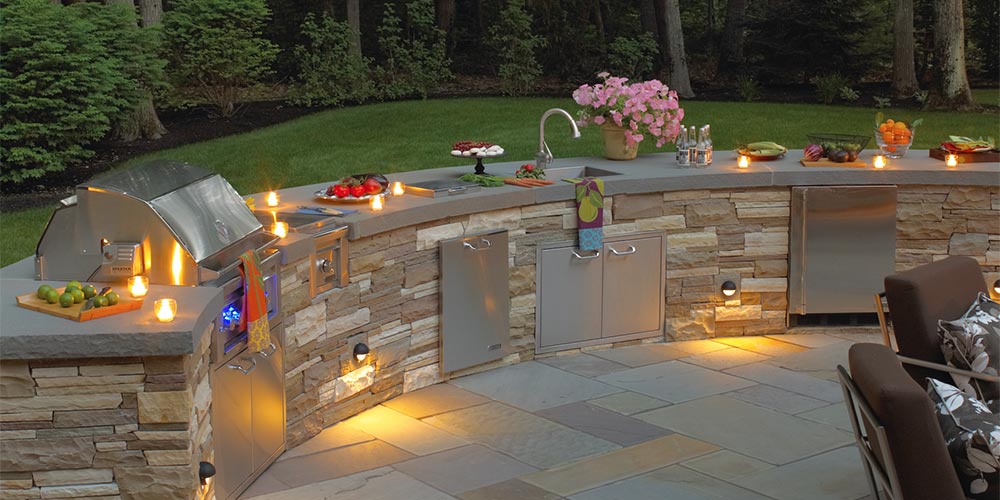
Outdoor lighting has transitioned from a safety mechanism and functional necessity to an art form that can enhance a landscape design. Illuminating your backyard from various angles is one great way to ensure a dynamic and captivating end result. Two simple and popular techniques that achieve this is uplighting and downlighting—read on to discover how to use them.
How to Use Uplighting
Uplighting is achieved by installing an upward-facing fixture at the base of a feature of interest, illuminating its curves and contours at an interesting angle. Spotlights or well lights can be used, emanating light of various intensities to achieve the level of drama you desire.
When vertical structures are lit from above, the entire bottom half of the feature is often cast in shadow. Uplighting, executed at a thoughtful angle relative to the structure of interest, is often the best way to showcase the details of a relatively tall piece. The beams of light created are intentional and dramatic and should, therefore, be used sparingly and spaced out considerably to avoid overwhelming the eye.
How to Use Downlighting
Downlighting is achieved by installing down-tilted lighting textures in high places so that they illuminate the landscape below. The intensity of the light you use is instrumental in the atmosphere you foster within your landscape. Soft light can mimic the gentle glow of moonlight, while light of greater intensity can make people who fall in its path feel overexposed but is excellent at bringing specific focal features into focus.
Downlighting can be the best lighting option when visibility is your primary concern. While path lights do well to keep uneven pavers illuminated, downlighting can also improve the visibility where crucial. Natural light can be achieved by installing lights of the right intensity in trees and allowing lower branches to cast moving shadows on the landscape. These can ensure that a landscape is well-lit at all times, without ever making you consciously aware of the outdoor lighting you have in place.
Combining Uplighting and Downlighting
Any landscaper will tell you that the key to a next-level landscape design is contrast. Polarity— dark and light, smooth and rugged, colorful and monochrome—creates drama and a sense of personality within a landscape design. Combining uplighting and downlighting into a single outdoor lighting plan is one way to achieve this captivating contrast for a balanced end result.
Downlighting can be used to achieve soft light in areas where functionality is important, such as outdoor living spaces. Harsh lighting in these areas can create an unpleasant glare and leave you feeling a lack of privacy.
Uplighting, on the other hand, can be used to draw attention to architectural gems, interesting plants, and other focal features within your landscape. Uplighting pillars creates a beautiful regal effect, while uplighting the contoured branches of a unique tree can cast eerie shadows and showcase its character. An alfresco dining area can be romanticized by soft downlighting while the water feature trickling away nearby uses uplighting to show off its stunning stone masonry.
